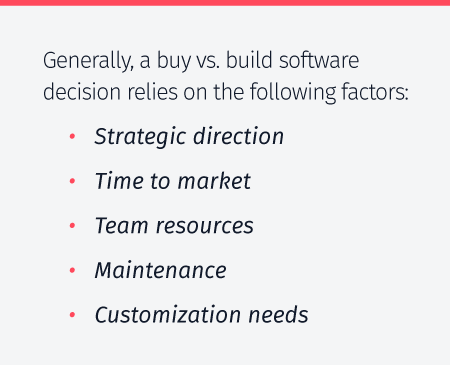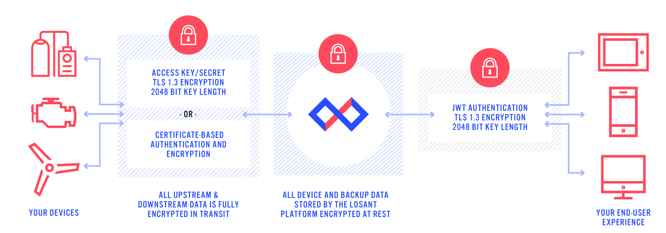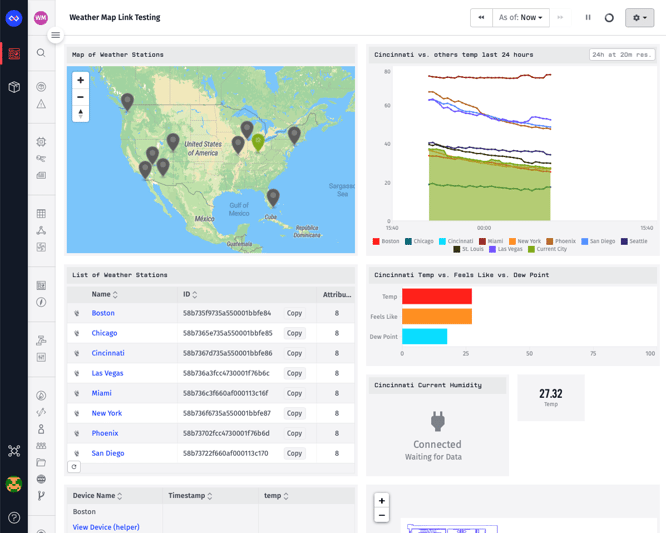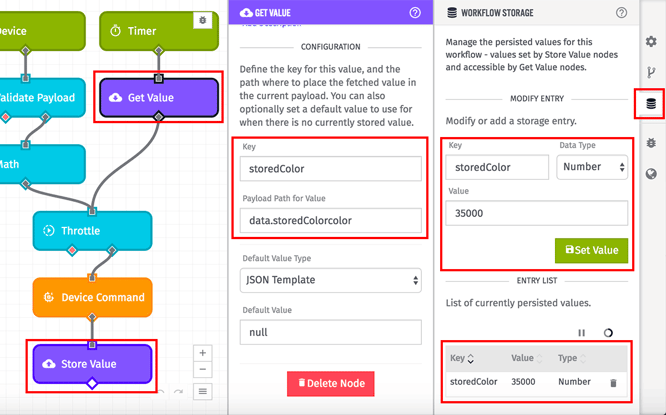Every company on the journey of bringing an IoT connected product to market always has to ask:
This question exists because companies want complete control over the vision of their product and don’t want limitations from using a third-party platform. While this is a very reasonable concern to have, a great IoT platform will not make you compromise your vision and give you full control over your product.
Let’s walk through 6 common IoT platform requirements when developing an IoT product.

1. An IoT Platform Should Be Highly Available and Scalable
An IoT platform should be highly available with minimal downtime so that your customers can always access your product. It should be scalable and allow you to add more devices or more payloads from existing devices that automatically scale with every device and/or payload.
As you can imagine, building a highly scalable and available platform is a difficult task that requires a lot of time and resources. The value an IoT platform gives you is high availability and scalability from day one without hiring additional resources, such as dev op engineers or allocating time at the start of your project building a platform before you can start developing your product.
2. An IoT Platform Should Securely Connect Data to the Cloud
An important part of any IoT platform is easily and securely getting data to the cloud. This data can come from many different places, such as sensors, devices, or 3rd party databases/services.
Rather than focusing on getting this data to the cloud, you want to spend most of your time building the branded user interface and analytics part of your product, where your customers will get the most value. An IoT platform should simplify bringing data in securely by having authentication methods already built-in. This allows for less of a need for SDKs or lower-level code to get the data out of the device to the cloud and provides an easy way to update the sensor or device on the fly as needed.

Easily connecting different data sources to the cloud with security standards means that you know your data and your customer’s data are protected. In addition, when updates are required for new features or bug fixes, an IoT platform allows you to do these quickly instead of losing valuable time updating each sensor or device and locally flashing that new code to those already in use.
3. An IoT Platform Should Build Dashboards To View and Interact With Your Data
An important part of any IoT product is the ability to view and interact with your data for insights. The IoT platform you choose should allow you to quickly build an insightful dashboard that shows your data and commands your devices within minutes instead of days or weeks. The visualizations should include a way to easily aggregate data from one device or across many like-devices in real-time or historically.

Quickly building bi-directional dashboards allows you to troubleshoot new devices quickly, start analyzing trends in your data to gain insights, and quickly show value to your customers by putting this device data and insights immediately into your customers’ hands.
4. An IoT Platform Should Transform Data, Apply Business Logic, and Track KPIs
An IoT platform should enable you to easily parse and transform the data that you collect, apply business logic, and track KPIs. It also should gain insights from data and allow you to create alerts for appropriate team members or 3rd party services like ServiceNow or Salesforce cases when issues arise. This allows you to immediately address new issues and track those issues over time to know which issues are systematic.
Easily transforming your data, tracking against KPIs, and creating alerts allows your team and customers to see their data that matters to them, track how your machine’s product is performing in real-time and over time, and ensuring that if any issues do arise that the correct team members are alerted to quickly fix the issue and deploy updates to fix the most common issues that are consistently happening.
5. An IoT Platform Should Have One Multi-Tenant End-to-End Application
An IoT platform should provide built-in authentication methods so you can easily create hierarchies of customers and multi-tenant applications. This enables you to create many different groups so that each customer can easily log into the experience and only see the data you gave them access to. This division of different customers and various roles within a customer framework to only see the data they have access to can be very difficult to initially set up if the IoT platform does not provide this functionality out of the box.
Look for an IoT platform that can give you that multi-tenancy throughout the entire end-to-end application all the way from the edge through the business logic to that end-user experience. The value of multi-tenancy saves you time and reduces errors in your application as you continue to add new features, make improvements, onboard more customers, and fix bugs.
6. An IoT Platform Should Give the Ability To Have Full Control Over Your IoT Connected Product
It’s important for an IoT platform to allow you to create an IoT product without compromise. When looking for an IoT platform, be sure to choose one that will enable you to quickly build any type of workflow that is needed to transform data and gather insights from your data, connect to any type of device over any connectivity layer, and the ability to build the exact vision for the end-user experience that your customers will interact with each day.

You know your customer and product better than anyone else, so it is important that the IoT platform enables you to make that vision come to life.
Building your IoT product using an existing IoT platform will allow you to get to market faster and continue to innovate in ways to make the building, deploying, and maintaining of your IoT product easier with each update.
If you would like to learn more about how the Losant Enterprise IoT Platform can help your business implement an IoT, schedule a platform walkthrough.
